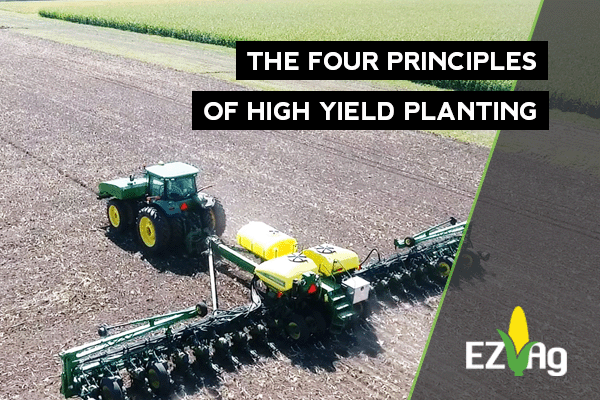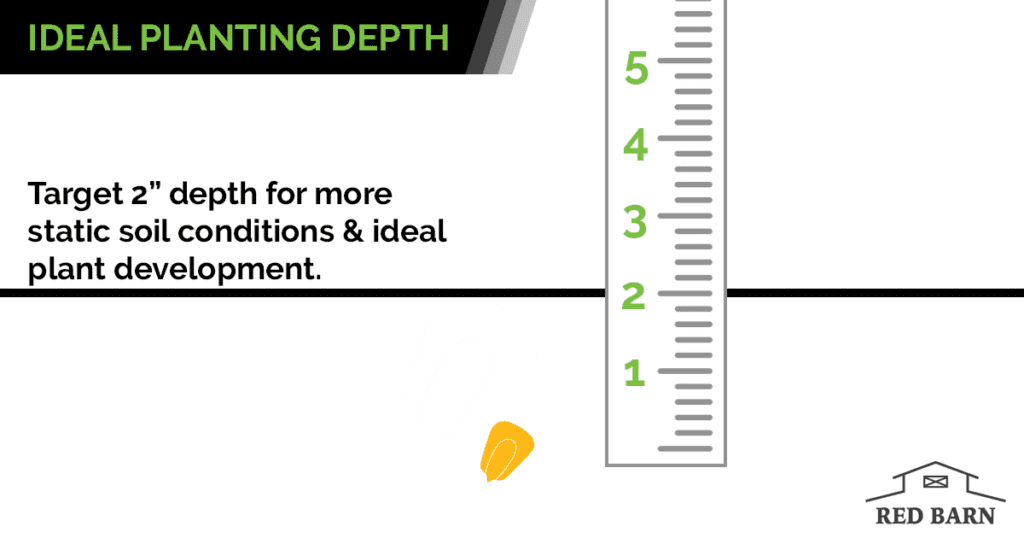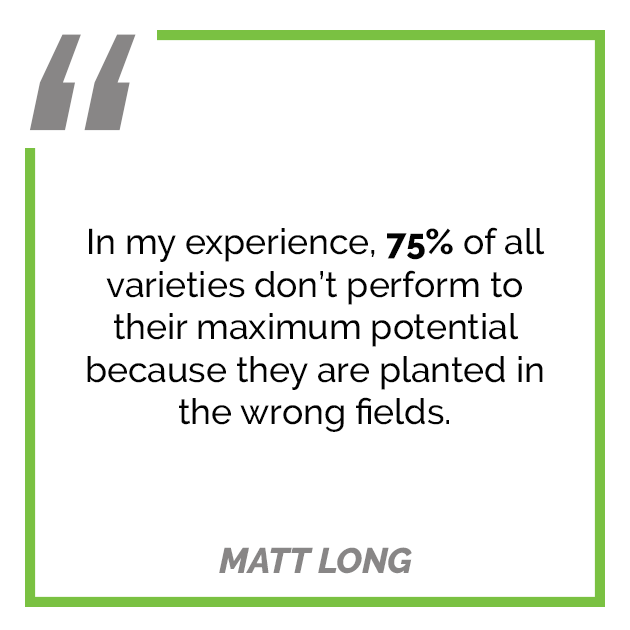Did you know, 100% of your max yield potential is established the minute your planter rolls through the field? Which means, if you don’t get planting right you’re limiting your yield potential and ultimately your profitability.

Proper planting is so critical to success, that four of our signature “top five factors to produce a top crop” are emphasized at planting. In this week’s blog, I am going to dive into the four controllable variables of the planter pass to help you take the human variable out of maximizing yield, which include:
Near Perfect Soil Conditions
We start with soil conditions because none of the other variables can be put into place without first considering this.
During this time of year our Red Barn experts are happy to partner with you on identifying your soil conditions sweet spot with a scouting event prior to planting. This type of visit will consist of the following: a soil moisture analysis and a soil temperature analysis which includes a real-time look at temperature as well as the future forecast.
When rating soil moisture we utilize the following four ratings: poor, fair, adequate, excessive. Rating can be done by simply grabbing a handful of soil, squeezing the contents in your hand before opening your palm to assess the way the soil either binds together or does not. This easy guide from the USDA is an excellent tool for those of you who like to head out and get the job done yourself! Bottom line when it comes to soil moisture: if you rate your soil as adequate it’s time to plant! Well, as long as your soil temperature is favorable.
If your soil temperature is a consistent 55 degrees and climbing with a favorable 7-day forecast, good news you’re in the ball part for plating! On the other hand, if your soil is sitting at 55 degrees and the next three days have less than favorable highs of 32 degrees pump the breaks. Planting in conditions like these means your seed is subject to imbibitional chilling shock which can have major impacts on your vigor score and cold germs.
Seed Placement
The next factor to assess when aiming for Max Yield planting requires you to look at seed depth and placement. Ideally, we’re looking at every seed planted to emerge within 12 hours of each other. Why? Even, consistent emergence eliminates the “runt pigs” that can wreak havoc on yield.
Something I am always surprised by each year is how often I answer the question, “What is the ideal planting depth?” The industry standard is a two-inch minimum planting depth for corn. I emphasize “minimum” here because in dryland situations 2.5” to 2 ¾” can even work! In irrigated and no-till environments, I see no reason not to plant at least two inches. Especially because these types of growing environments have even more consistent soil temperature and moisture.
The deeper you go into the soil profile the more static and even your soil temperature is, which is ideal for hitting those near perfect soil conditions I wrote about previously. Which is why you hear, two-inch minimum because it’s ideal for the physiological development of your corn crop.

I know I dropped a science term, let me explain further:
When your corn seed emerges, it grows the radical root system downward and sends up the shoot. When the shoot sees light, it sends a signal back down the line which signals to the plant, at this depth, shoot out the nodal root system aka the crown of the plant. And guess what? The crown ultimately takes up about two inches of space. So you see, that initial seed placement depth is critical because you want that strong establishment nodal root system. Which, by the way, are the first roots to begin uptaking those yield establishing nutrients.
Seed placement is critical to establishing a strong root system, and it backpacks off our first topic of near perfect soil conditions because the excessive soil moisture levels can hinder this development regardless of your depth! For example, when planting in excessive soil conditions you can create sidewall compaction and that results in what we call hatchet root. It’s very easy to identify this issue with an early season root dig. Upon digging a few plants you’ll notice a flattened root system – hence the name “hatchet root” – because those roots are running up and down that compacted soil wall vs. growing as a crown.
Seed Quality
You know how important seed quality is to me! I wrote an entire blog on it just the other month that you can browse to understand why I’m so passionate about this topic! For that reason, I’ll keep this section fairly short and sweet.
Soil conditions and planting depth are compoundable issues when you don’t have high seed quality. Because of this compounding effect, you have to train yourself to refuse to accept a below optimal state for each controllable variable of the planter pass. But you’ll ask me, “What about the whims of Mother Nature?” or “I have to have my crop in this field by Thursday so I can get to X field by Friday, what do I do?” And believe me, as a farmer myself, I hear you and I get the struggle. And this is the very reason I stress the importance of seed quality at planting.
The fact of the matter is, you may not be able to get the absolute perfect soil conditions but if you go 99% on placement and 99% on seed quality those help you overcome the 80% you started with in soil conditions.
So if we’re being realistic and meeting you where you’re at, I will say this: Soil conditions are the one thing guys can often take a backseat to. But my caveat to this is: only do this if you will accept nothing less than the highest seed quality and optimal planting depth and placement.
Right Hybrid, Right Field

In my experience, 75% of all varieties don’t perform to their maximum potential because they are planted in the wrong fields. Even as recently as this past year, I made a very specific hybrid recommendation to a farmer to plant that variety at an increased population dentistry in a specific field based on that field’s historical information. Unfortunately they planted a different hybrid at those increased populations that didn’t have the same characteristics as my recommendation and the performance was not ideal. I share this experience to emphasize that if a certain hybrid is chosen for a particular field there are very specific reasons for this choice.
For example, shorter stature hybrids that have shorter ear placement shouldn’t be planted on a terraced field. Instead you’d want a variety with better ear flex to maximize yield. Another example, hybrids that don’t have adequate soil PH tolerance shouldn’t be placed on the worst field of the farm. These are just a few of the many examples that detail the importance of thinking of the phenotypic characteristics of each hybrid for optimal placement and performance.
This right hybrid, right field conversation can feel overwhelming, but oftentimes when you get into your seed shed it looks a lot like this: You will have a large pile of bags for three hybrids and then a much smaller pile, usually around 30-50 bags tops, of two different hybrids. More often than not, that smaller pile with a specific amount of a certain hybrid needs to be used in a specific field.
So when it comes time to making those right hybrid, right field placements consider how big of a pile you have of a certain hybrid, and always call your Red Barn rep for support! We’re not here to add complexity to your planting process and leave you hanging out to dry. We’re here for every step of the way including sorting seed bags to help you stay organized!

Leave a Reply